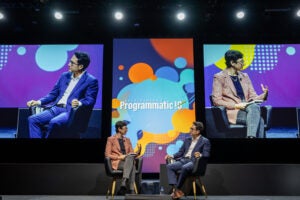 Consumers across the globe find advertising too frequent and irrelevant, and the younger ones are more aware of ad blocking, according to an Accenture Digital Consumer study released Monday.
Consumers across the globe find advertising too frequent and irrelevant, and the younger ones are more aware of ad blocking, according to an Accenture Digital Consumer study released Monday.
More than 80% of the 28,000 people surveyed in 28 countries thought they saw too many ads. Seventy-three percent of those aged 14-17 know about ad blocking, while only half of those over 55 are aware of ad-blocking technology. (Accenture didn’t survey who had actually installed ad blockers.)
Rather than force more ads on consumers, media companies need to address their disenchantment, said Gavin Mann, Accenture’s global broadcast lead.
“Don’t focus too much on fighting the current problem, which is the ad-blocking technology,” Mann advised, pointing to the music industry’s failed attempts to thwart piracy. “Focusing the majority of their efforts on fighting piracy distracted them from reinventing their own business model.”
Instead, media companies should look hard at pay-for-content models. Forty-two percent of consumers said they were “planning to pay for new solutions to remove ad interruptions” in the next year, according to the survey. Broken down by age, 56% of those 14 to 17 planned to pay for video or text content, compared to a third of those at least 55 years old.
The desire to see fewer ads is motivating these purchases. Consumers were most willing to pay a subscription for long-form video content. Three-quarters of respondents said they would pay for long-form video content if there were fewer ad interruptions.
There are other options besides moving to a paid model. Half of those surveyed were interested in receiving personalized advertising messages. But 73% said current advertising didn’t match their personal interests and preferences.
That disconnect represents an opportunity, Mann said. “In the world of a personalized experience, where a consumer can dictate the schedule of what they consume, advertisements need to keep up. Trying to sell products that are irrelevant feels intrusive.”
Younger people, who use personal devices like the mobile phone over communal ones like the TV, are more receptive to personalized ads than older consumers, according to the survey results.
Media companies can take that into account as they strengthen data about their consumers and use their viewing habits to segment them and deliver appropriate ad experiences, Mann said.
Besides personalization, the industry can maximize opportunities to show “less invasive, more entertaining” ads, Mann said, like Red Bull’s forays into the content arena.
Media companies should consider all of these different options when designing new business models. Because consumers expect personalized experiences, some may prefer to pay for content, while others may want something else, like a Red Bull-like content experience, Mann said.
“We are already moving from a very small number of business models targeted at a very small number of segments, which doesn’t create maximum value for either party,” he said, “to a scenario where you offer much richer, more granular options for how they consume media that extracts the maximum amount of revenue from each audience member.”













